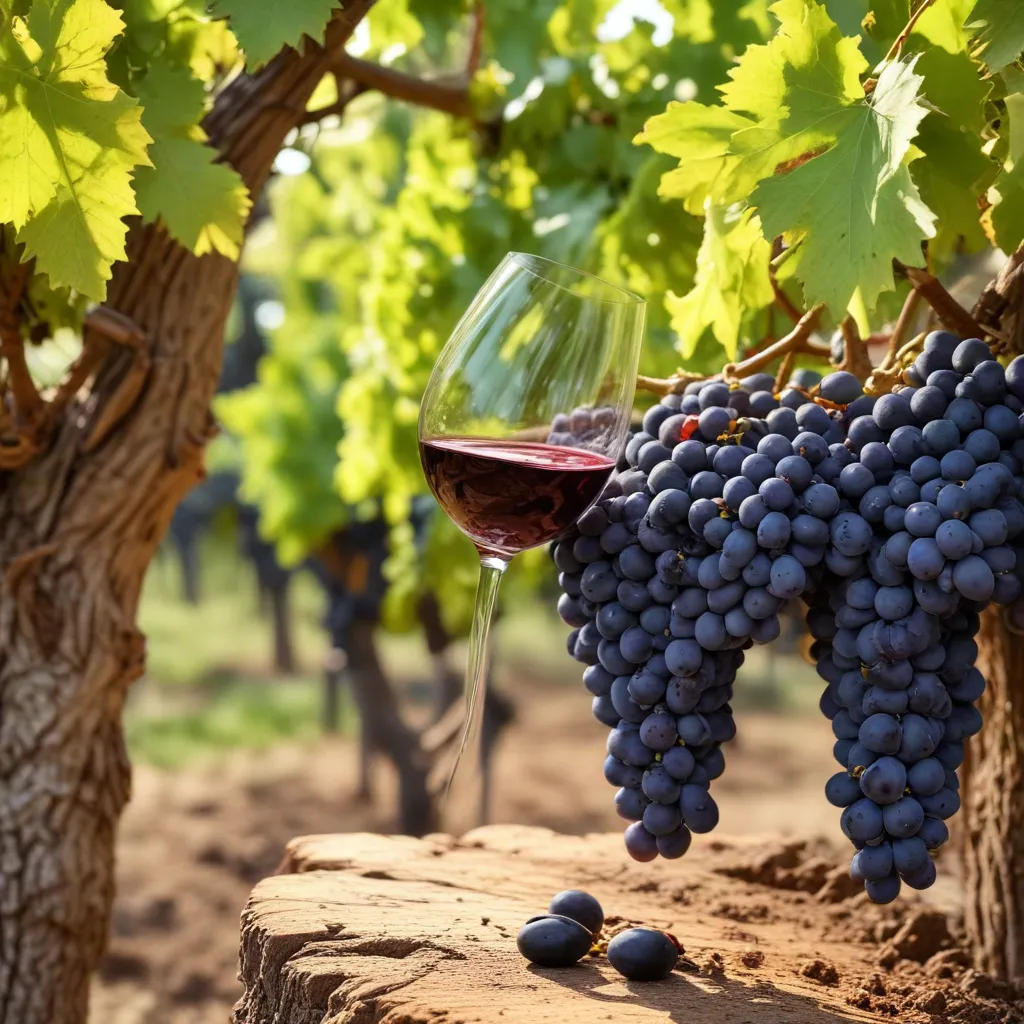
Grape Expectations: Unlocking the Antioxidant Potential of Wine
As a vintner and hospitality expert here at the Wine Garden Inn, I’m thrilled to share the wonders of wine’s antioxidant prowess. Beyond the sheer pleasure of sipping a well-crafted vintage, the health benefits of wine consumption are becoming increasingly celebrated. At the heart of this is the remarkable concentration of antioxidants found in wine, particularly in certain grape varieties.
The Science Behind Wine’s Antioxidant Properties
At the molecular level, the antioxidant capacity of wine stems from its rich phenolic compound content. These polyphenols, which include flavonoids like resveratrol and quercetin, have an uncanny ability to neutralize free radicals and mitigate oxidative stress. Oxidative stress, if left unchecked, can lead to cellular damage and inflammation – a precursor to a host of chronic conditions.
The specific phenolic makeup of a wine is heavily influenced by factors like grape variety, viticulture practices, and winemaking techniques. Generally speaking, red wines tend to have higher antioxidant levels than their white counterparts, owing to the extended skin contact during fermentation that allows for greater polyphenol extraction.
Identifying Key Antioxidant Compounds in Wine
While wine contains a veritable symphony of beneficial compounds, a few stand out as true antioxidant superstars. Resveratrol, a stilbene found predominantly in the skins and seeds of grapes, has garnered immense attention for its cardioprotective and anti-aging properties. Quercetin, a flavonol common in red wines, has demonstrated potent anti-inflammatory effects. Even the humble tannins, with their astringent mouthfeel, contribute significantly to wine’s antioxidant profile.
Factors Influencing Antioxidant Content in Wine
The antioxidant concentration in wine is a delicate balance, influenced by a variety of factors. Grape variety plays a crucial role, with some cultivars naturally predisposed to higher polyphenol levels. Terroir, or the unique environmental conditions of a vineyard, can also shape the antioxidant potential – factors like soil composition, microclimate, and elevation all leave their mark.
Winemaking techniques are equally integral. Gentle pressing, extended maceration, and meticulous temperature control during fermentation can all enhance the extraction and preservation of precious antioxidants. And of course, the all-important act of decanting allows oxygen to interact with the wine, unlocking its full aromatic and antioxidant potential.
Unlocking the Health Benefits of Wine Consumption
The implications of wine’s antioxidant prowess are far-reaching, spanning numerous aspects of human health. As a wine & health enthusiast, I’m particularly excited to explore how these compounds can positively impact our well-being.
Cardiovascular Health and Wine Antioxidants
Numerous studies have indicated that moderate wine consumption, particularly of red varieties, can contribute to improved cardiovascular health. The polyphenols in wine possess the ability to reduce inflammation, improve endothelial function, and even lower blood pressure – all crucial factors in maintaining a healthy heart.
Cognitive Function and Wine Antioxidants
The neuroprotective effects of wine antioxidants have also garnered significant attention. Resveratrol, for instance, has been shown to enhance cognitive function and potentially stave off age-related cognitive decline. By shielding brain cells from oxidative damage, wine’s antioxidant arsenal may play a role in supporting long-term neurological health.
Cancer Prevention and Wine Antioxidants
Emerging research suggests that the antioxidants in wine may also possess anti-cancer properties. Polyphenols like quercetin and resveratrol have demonstrated the ability to inhibit the growth and proliferation of certain cancer cells, making wine a potentially valuable ally in the fight against this formidable disease.
Exploring Grape Varieties and Antioxidant Profiles
Not all wines are created equal when it comes to antioxidant content. Certain grape varieties have a natural propensity for higher polyphenol levels, making them particularly enticing for health-conscious oenophiles.
Cabernet Sauvignon and Its Antioxidant Richness
As a classic red wine varietal, Cabernet Sauvignon is renowned for its bold, full-bodied character. But beyond its robust flavor profile, Cabernet also boasts an impressive antioxidant punch. The thick skins and seeds of Cabernet grapes are veritable treasure troves of resveratrol, catechins, and other potent polyphenols.
Pinot Noir: A Delicate Balance of Antioxidants
In contrast to the powerhouse Cabernet, Pinot Noir offers a more nuanced antioxidant profile. This delicate red wine grape is celebrated for its elegant, fruit-forward character, but it also contains a harmonious blend of quercetin, anthocyanins, and other protective compounds. The subtle interplay of these antioxidants makes Pinot Noir a delightful and health-conscious choice.
Chardonnay and the Antioxidant Surprises
While white wines are generally lower in antioxidants than their red counterparts, Chardonnay stands out as an exception. Careful winemaking techniques, such as extended lees contact and judicious oak aging, can imbue Chardonnay with unexpected depths of antioxidant richness, including generous amounts of resveratrol.
Optimizing Wine Production for Antioxidant Retention
As a winemaking journey enthusiast, I’m fascinated by the ways in which viticulture and enology can be tailored to preserve and even enhance a wine’s antioxidant profile. From meticulous grape growing to innovative vinification methods, there’s a wealth of opportunity to coax out the full antioxidant potential of our vinous offerings.
Winemaking Techniques and Antioxidant Preservation
Gentle, low-intervention winemaking practices are key to safeguarding a wine’s antioxidant riches. Techniques like whole-cluster pressing, cold maceration, and malolactic fermentation can all contribute to the retention of precious polyphenols. And of course, the judicious use of sulfites to prevent oxidation is a must.
The Role of Terroir in Antioxidant Development
The interplay of soil, climate, and topography in a particular vineyard – the terroir – can have a profound impact on the antioxidant potential of the grapes. Careful site selection and an intimate understanding of our local microclimate allow us to cultivate grape varieties ideally suited to their growing conditions, ensuring optimal antioxidant synthesis.
Innovative Approaches to Enhance Antioxidants
At the Wine Garden Inn, we’re always on the lookout for novel ways to amplify the antioxidant content of our wines. Experimenting with alternative fermentation vessels, exploring the use of natural yeast strains, and even investigating the potential of grape marc (the leftover skins and seeds) as a source of polyphenols – these are just a few of the innovative approaches we’re pursuing.
By embracing a holistic, terroir-driven approach to winemaking and constantly pushing the boundaries of our craft, we’re confident that we can deliver wines that not only delight the palate but also nourish the body. After all, at the heart of the Wine Garden Inn experience is a deep appreciation for the profound connection between viticulture, enology, and human health. So raise a glass to your well-being, and let the antioxidant-rich bounty of our vineyards inspire you to live well and drink well at https://www.winegardeninn.com.
